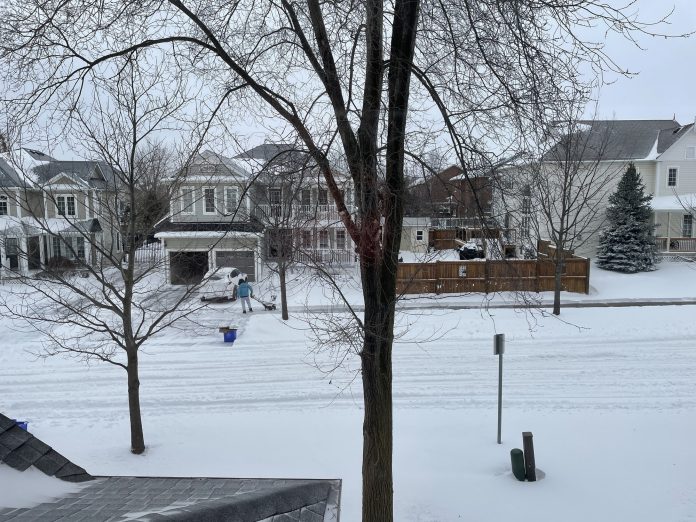The new year brought chaotic weather patterns to Durham Region.
Early January started with temperatures above freezing, bringing frequent rain to Oshawa. By the end of the month, cold weather swept in, bringing plenty of snow to the area.
The beginning of January saw mist, light rain, and light snow. As it got colder halfway into the month, it got colder and Oshawa had freezing rain and ice pellets. As the month drew to a close, heavy snow, drifting snow (blowing snow), and light snow hit the area.
Then cold rain hammered the region followed by sun and warmer temperatures in mid-February.
Yet, David Phillips, a senior climatologist with Environment Canada, says it’s not unusual.
“It’s not been record dry or it’s not been record wet. It’s sort of very typical. I mean, I look at the total precipitation of the entire winter,” he says.
However, Phillips says flooding can be an issue.
Phillips said two types of flooding can happen in Ontario. The first type, spring flooding, happens when there is a lot of snow and ice.
“You would go from slush to sweat,” he says. “What happens is that snow melts all at once. You get some rain on top of that snow. The snow cover sitting on the ground is sopping wet with moisture, and all of a sudden the ice moves.”
The second type of flooding is what Phillips calls the “gully washer flood,” where heavy rainfall takes place in a short period of time. He says street flooding is many peoples’ concern right now.
“When it rains, that rain has to go somewhere,” he says. “Because it’s warmer in the atmosphere now than it used to be, [the latter] can hold more moisture.”
For this reason, rain falls in heavier amounts. Phillips said about forty years ago rain used to run off land and drain into the ground. Today, precipitation falls on building material and flooding becomes instantaneous.
“Our sewage systems would be chalked full of moisture and rain immediately,” he says. “And so our [sewers] cannot handle it. This is why we are seeing underpasses, streets, and parking lots being flooded.”
Phillips said this is the “urban flood” versus the “rural flood.”
“That is a concern, but that’s not something we need to be worried about right now, because that is the thunderstorm in July which brings too much rain in a short period of time,” he explained.
Phillips said regardless of how dry a city is, rain can become a flood. He says this is the new reality due to climate change, and why flooding is seen more often in urban areas.
“It may not rain as often, but when it does, it’s more likely to be a flood rather than a welcome rain,” he says.
The average rainfall in January in Oshawa is 53 millimetres, according to Extreme Weather Watch. In February, the average rainfall is 43 millimetres.
The most rainfall ever recorded in Oshawa was in August 1986, with 20.9 centimetres of rain in one month.
.




